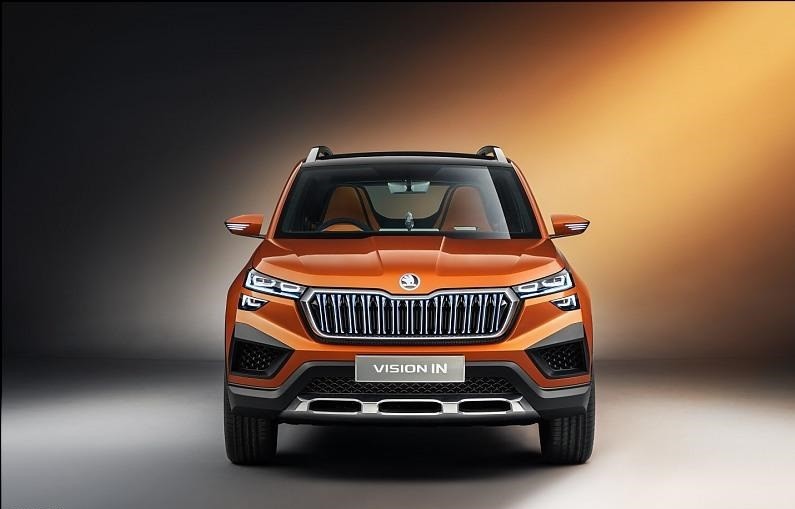Initial India 2.0 model will come with 90 percent localization, but Skoda boss Bernhard Maier is targeting 95 percent, that is possible if gearboxes are manufactured.
On the eve of the 2020 Automobile Expo, Skoda showed the Vision IN concept, which, according to Skoda Auto’s international CEO Bernhard Maier, “is 90 percent of what the production car will look like”. Based on the Volkswagen Group’s global A0 stage, this midsize SUV, the very first version under India 2.0′ — a buzzword coined for Skoda Auto Volkswagen India’s ambitious revival strategy — will be nearly entirely manufactured in India and established from the first half of 2021 using a local content level of over 90 percent.
To meet the cost targets, an even greater degree of content might be required to further reduce the number of components along with the customs duty they attract. Maier is currently pushing for 95 percent localization, yet to achieve the transmission would need to be localized. “between the decisive issues that we must conclude is to see how feasible it’s to localize the transmission — not just 1 gearbox, but probably more than one. If that’s something that is turning out to be positive, then we are on the path to go 95 percent,” said Maier. Also, he added they have found providers and are very confident of maintaining their superior degrees that were global.

The key to localization, however, is volumes, and although Skoda Volkswagen car India gets the necessary installed capability (2,00,000 units per annum ) in the Chakan plant, which it took over from Volkswagen India, it may not get mopped up by national demand. The business is considering exports actively to utilize as much ability as possible. “Among the decisive issues that we must conclude is to learn how feasible it’s to localize the transmission — not only 1 gearbox, but probably more than one gearbox. If the Indian market is not absorbing everything we are producing here, we have to export outside India, and this is precisely how we put up the job and it’s working on the ideal path.”
Setting up a line also to justify the investments, and to manufacture transmissions is exceptionally costly, a quantity of 2,00,000 gearboxes is required. On the other hand, the the supplier base required to produce the transmission isn’t the challenge here. Presently, the Volkswagen Group already has many plants worldwide producing gearboxes adding yet another isn’t easy to justify, especially when the Group and the industry itself are actively heading towards electric cars, which don’t have conventional gearboxes.

Skoda Auto Volkswagen India can be analyzing the gearboxes to replace the twin-clutch or DSG gearbox that Volkswagen pioneered. Having a firm grip on prices, cheaper and robust solutions such as the 6-speed torque converter (seen on the Skoda Rapid), or even a CVT are being considered.
Clearly, Skoda is currently taking a pragmatic approach and studying all options, even if it means forfeiting holy cows such as the DSG to create its India 2.0 cars more accessible to the market.
Maier is confident of attaining a combined 5 percent market share for Volkswagen and Skoda, which translates to around 1,70,000 units per year. Currently, the combined market share stands in a little under 2 percent.


